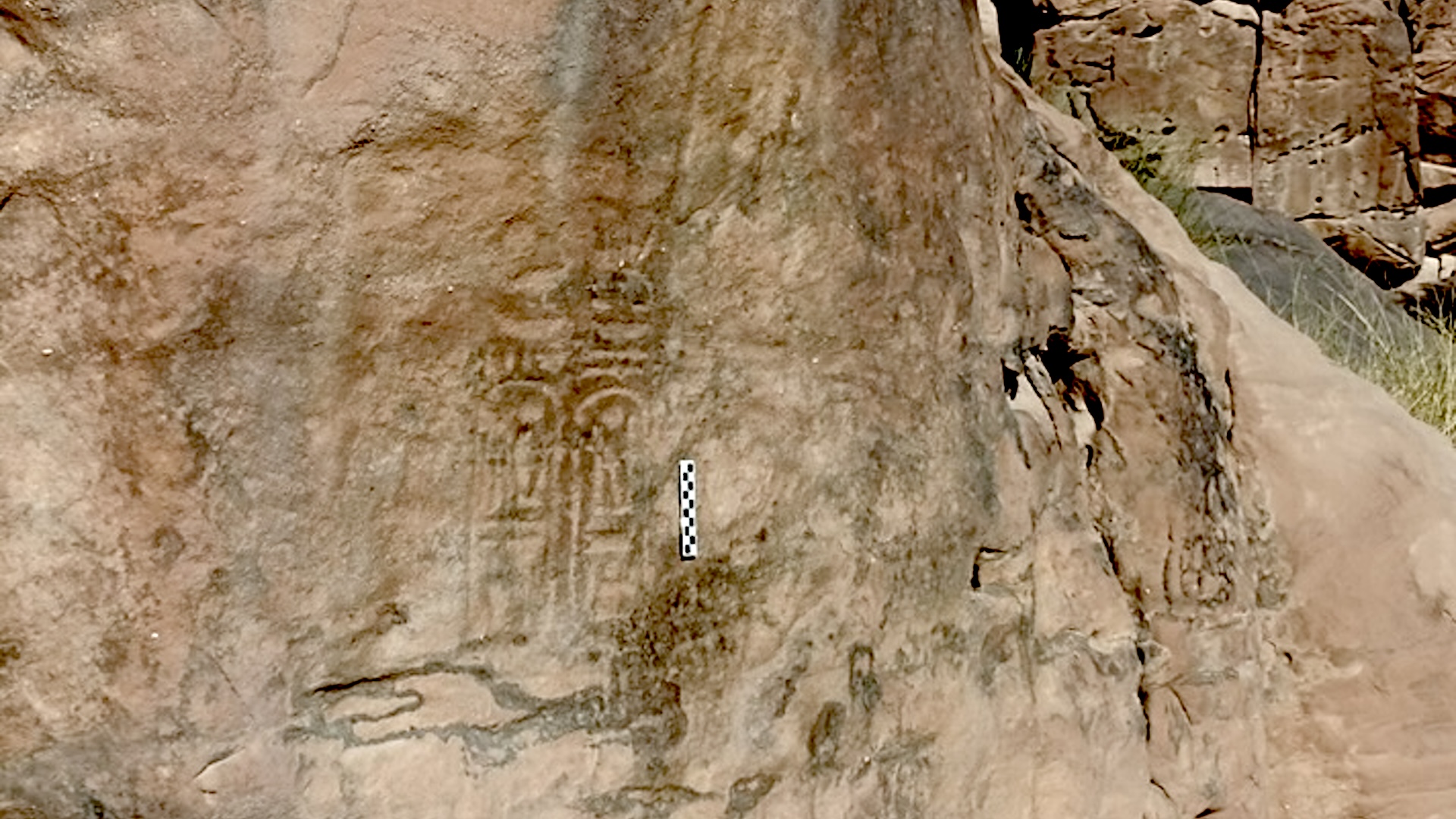
Archaeologists in Jordan have documented a carved inscription bearing the identify of Ramesses III, an Egyptian pharaoh who reigned round 3,200 years in the past, Jordan’s Ministry of Tourism and Antiquities stated in a translated assertion.
Ramesses III (reign circa 1184 to 1153 B.C.) dominated at a tumultuous time within the area’s historical past. Quite a lot of main powers within the area — such because the Mycenaeans (who had been based mostly in Greece and the Aegean islands) and the Hittites (who had been based mostly in Turkey) — collapsed, and a bunch generally known as the “Sea Individuals” invaded components of the Center East, together with Egypt. Historic information say Ramesses III defeated the Sea Individuals’s invasion of Egypt and campaigned within the jap Mediterranean, sustaining Egypt’s empire.
The inscription, which might have been carved by Ramesses III’s military, is within the Wadi Rum protected space, a desert in southern Jordan that accommodates quite a few archaeological stays. Though the existence of the inscription was recognized to some individuals, it wasn’t till the previous yr that it was scientifically documented.
The inscription is “close to a pure spring, in a location that’s extraordinarily tough to entry,” archaeologist Ali Al-Manaser instructed Reside Science in an e mail. He’s the top of the Division of Cultural Sources Administration and Museology at Hashemite College in Jordan and helped doc the inscription.
“This discovery is especially vital because the inscription is the primary of its sort present in Jordan — a royal Egyptian inscription carved into a set, giant stone that’s a part of a mountain formation,” Manaser stated. “Beforehand, one other Egyptian inscription was found within the northern area of Jordan; nonetheless, it was inscribed on a moveable rock. In distinction, this newly documented inscription is on an immovable, outstanding rock face.”
Zahi Hawass, a former minister of antiquities in Egypt who’s working with researchers in Jordan, stated the inscription provides the identify of Ramesses III and calls him “Sa-Re,” which implies “son of Re” (additionally spelled Ra), a solar god of Egypt. The identify was inscribed when Ramesses III led a military that handed by the realm, Hawass instructed Reside Science in an e mail.
He famous that the military of Ramesses III additionally carved an inscription with the pharaoh’s identify at Tayma, a settlement in what’s now northwestern Saudi Arabia.
Ramesses III probably went via Jordan to keep up entry to valuable items, Manaser stated. The pharaoh “would have sought to safe these commerce routes to keep up Egypt’s entry to sources like copper, which was considerable within the southeast of Jordan,” Manaser stated.
No associated artifacts had been discovered beside the inscription. Nonetheless, the archaeological exploration of close by areas is ongoing, and it is attainable that extra proof of Ramesses III’s campaigns within the area might be discovered sooner or later, Manaser stated.


